Here in my home in Washington State of the Pacific Northwest, autumn has come. Even on sunny days, there is a different smell in the air; the leaves have begun to turn yellow. I have started to shuffle my feet down the sidewalk, trying to catch and crunch fallen leaves underneath my step. In this part of the world, the leaf art of British artist Andy Goldsworthy seems particularly appropriate. For those readers who aren't in the Northern Hemisphere, our featured artist does beautiful work with other mediums as well, examples of which are also included in this post.
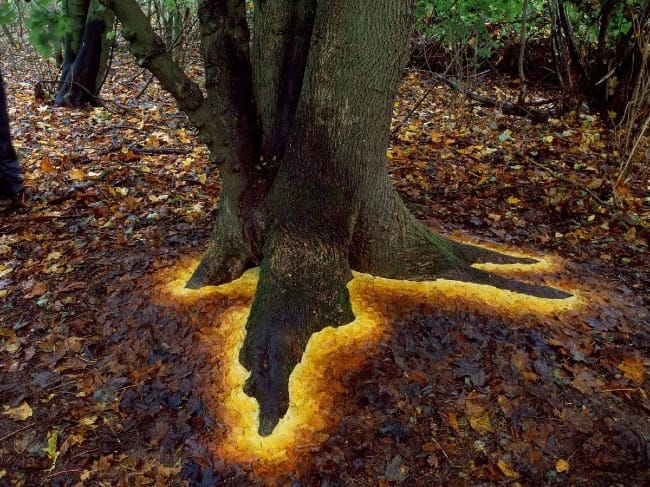
"The intention is not to mimic nature, but to understand it." Andy Goldsworthy
I was first introduced to the work of Andy Goldsworthy 30 years ago. I was working in the general book department at the University of Oregon bookstore when we received one of his books, Andy Goldsworthy: A Collaboration with Nature. His transformation of natural objects into materials for his art was fascinating, but a little perplexing. In the years since, his work has continued to fascinate me and recently, a Circlewood member suggested his work for this column—thanks for the idea, Tim!
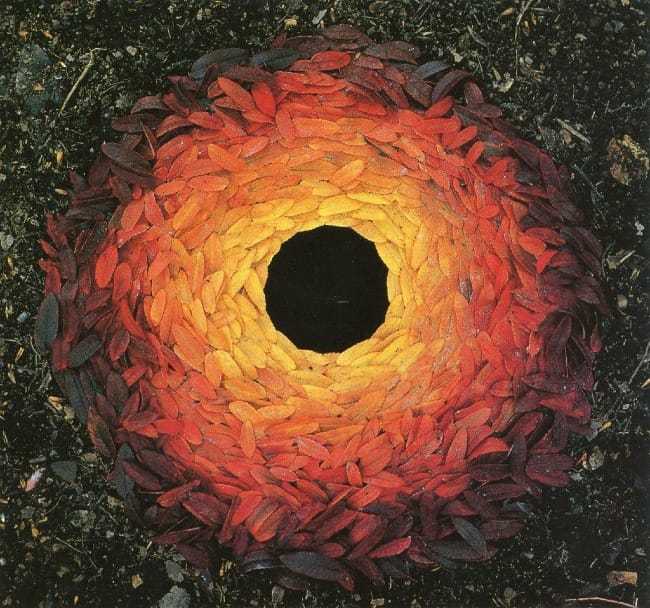
Goldsworthy works with natural materials such as leaves, sticks, ice, and rocks, which he gathers from the outdoor site where he is doing the installation. For the most part, he takes what is already on the ground. As far as the places where he does his work, although he usually works in rural settings, his definition of the natural world is bigger than that.
"Nature for me isn't the bit that stops in the national parks," he says. "It's in a city, in a gallery, in a building. It's everywhere we are." 1
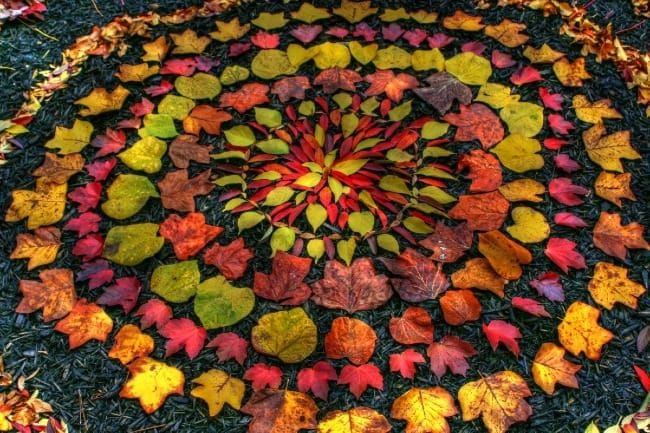
"I think it’s incredibly brave to be working flowers and leaves and petals. But I have to: I can’t edit the materials I work with. My remit [assigned task] is to work with nature as a whole."
Art that Doesn't Last Forever
Many of Goldsworthy's installations are short-lived—ephemeral, as his work is often described by him and others. (In fact he has a photography book of his work with that in the title). Ephemeral, from the Greek, ephḗmer(os) means, “short-lived, lasting but a day,” as in a one-day fever, which is how it was first used. Many of his works fall into this category. He doesn't expect or even want them to last forever. Part of the interest for him is that they don't last, especially evident when he is using materials such as ice.
This mutability of the natural world, which includes us, is something we see also in scripture. In Psalm 103:15-16, we hear:
The life of mortals is like grass,
they flourish like a flower of the field;
the wind blows over it and it is gone,
and its place remembers it no more.
I wonder if we might come to a healthier attitude toward change than we often have if we were able to observe it and understand it in a context that seemed less threatening—such as art that embraces things that last for a moment and then are gone.
Tools and Inspiration
Goldsworthy's tools are spit, hands, teeth, and objects he finds and turns into tools. Spit is particularly useful when he is trying to wrap leaves around a branch or bind pieces of something together, like the ice sphere below.
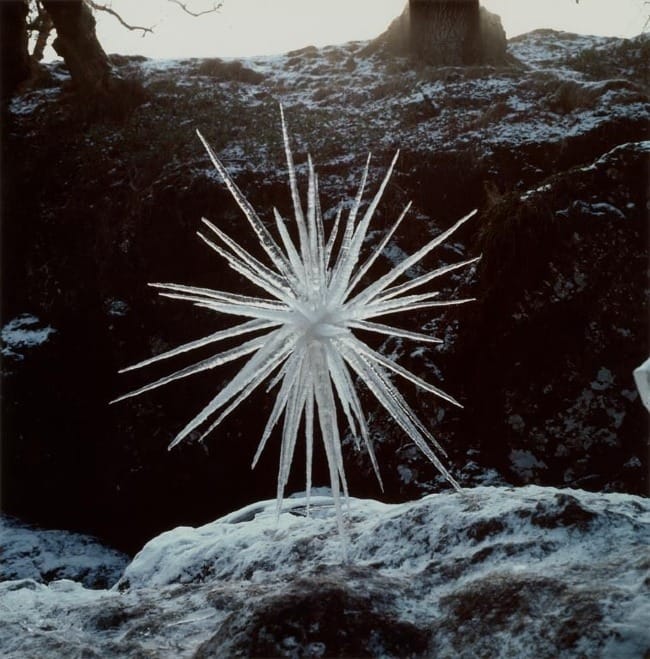
“It's not about art. It's just about life and the need to understand that a lot of things in life do not last.”
Sometimes the only way anyone will see Goldsworthy's works is through the pictures he takes of them before they change, melt, collapse, or are brought down by a passing wind. His work may be gone in a day or even an hour after he has completed it, so photography is an integral part of his work. Of course, there are also plenty of times when the work doesn't even make it to the photograph stage, when something he is trying to build breaks apart or blows away, unfinished and unphotographed.
By using the landscape as his material, he illustrates aspects of the natural world such as its colors, movement, and mutability but all in a way that incorporates his aesthetics. His work doesn't just mirror what you would find normally in nature, but transforms those natural materials into something different, creating a work of art that is made from nature and placed within it, but is also distinct from it. No one would mistake something he created as having occurred naturally.
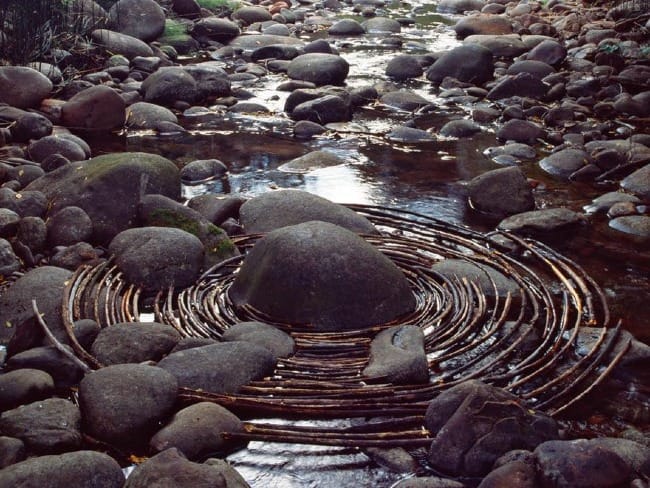
“I take the opportunities that each day offers. . . . I stop at a place or pick up a material because I feel that there is something to be discovered. Here is where I can learn.”
Born in Cheshire, UK, Goldsworthy spent years working on farms, harvesting potatoes, which he has said is a lot like doing his art pieces. He learned skills there such as using a shovel, skinning a rabbit, and building a dry-stone wall. At the same time, he saw lines, forms and structures that captured his imagination and birthed his artistic vision. Goldsworthy is generally considered the founder of modern rock balancing. In the picture below, what part of the structure seems the most unlikely piece of it to you?
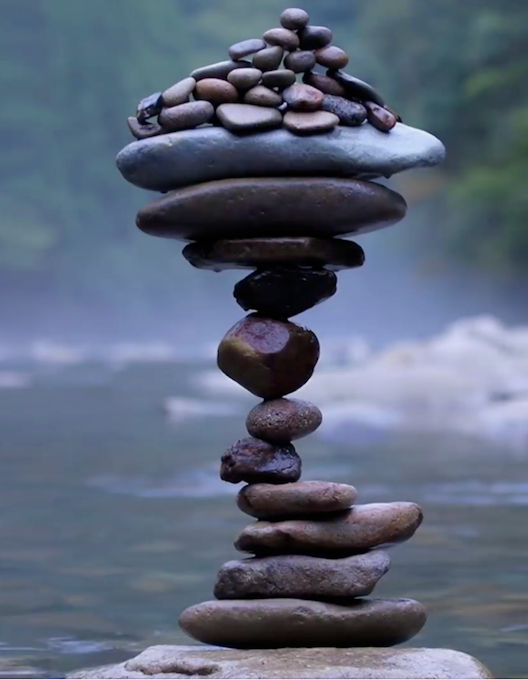
“We often forget that WE ARE NATURE. Nature is not something separate from us. So when we say that we have lost our connection to nature, we’ve lost our connection to ourselves.”
Although his sculptures are most often temporary, he has done some permanent installations, such as the wall below. Even so, he exhibits a humility in these projects.
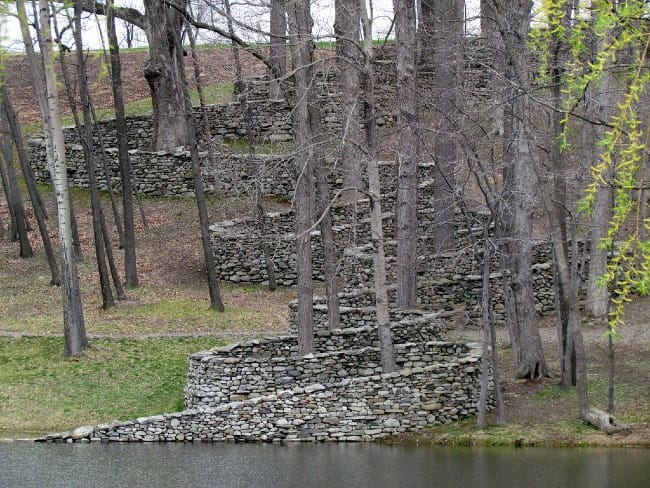
"There are occasions when I have moved boulders, but I'm reluctant to, especially ones that have been rooted in a place for many years. When I must, I look for the ones on the edge of a field that had been pulled out of the ground by farming."
An Invitation
This week, I would like to invite readers to a different kind of reflection—one done with your hands. In the next few days, I invite you to go outside and make your own art out of leaves, stones, twigs, moss, or some other natural material(s) you find that you can use—respectfully and carefully. Take time to look around you for what you want to use and then create something new by balancing, arranging, stacking, twisting those materials into some form that intigues you. Take some time to play and experiment and even daydream a little.
After you have created something, here are a couple of question to think about. Did this exercise help you to see this particular place on earth in more detail? What shapes and colors did you find yourself gravitating toward. How did it feel to spend time in this way?
And here's the second part of this invitation—share what you created with us! Once you've finished your creation, take a picture of it and send it to me at info@circlewood.online. It doesn't have to look like a piece that Andy Goldsworthy would make; just have some fun and create something of your own from what you find around you.
Feel free to include a short sentence or two describing what the experience was like for you, what you saw or experienced, what you see in what you made. Then, in a couple of weeks, I'll share what people have sent in. (It would especially be fun to have pictures with different materials from different seasons or parts of the world). I would love to share what you found beneath your feet in your back yard and what you did with it.
Louise
There are a couple of documentaries about Andy Goldsworthy—one of which is called Rivers and Tides.
Feel free to contact me directly at info@circlewood.online.
